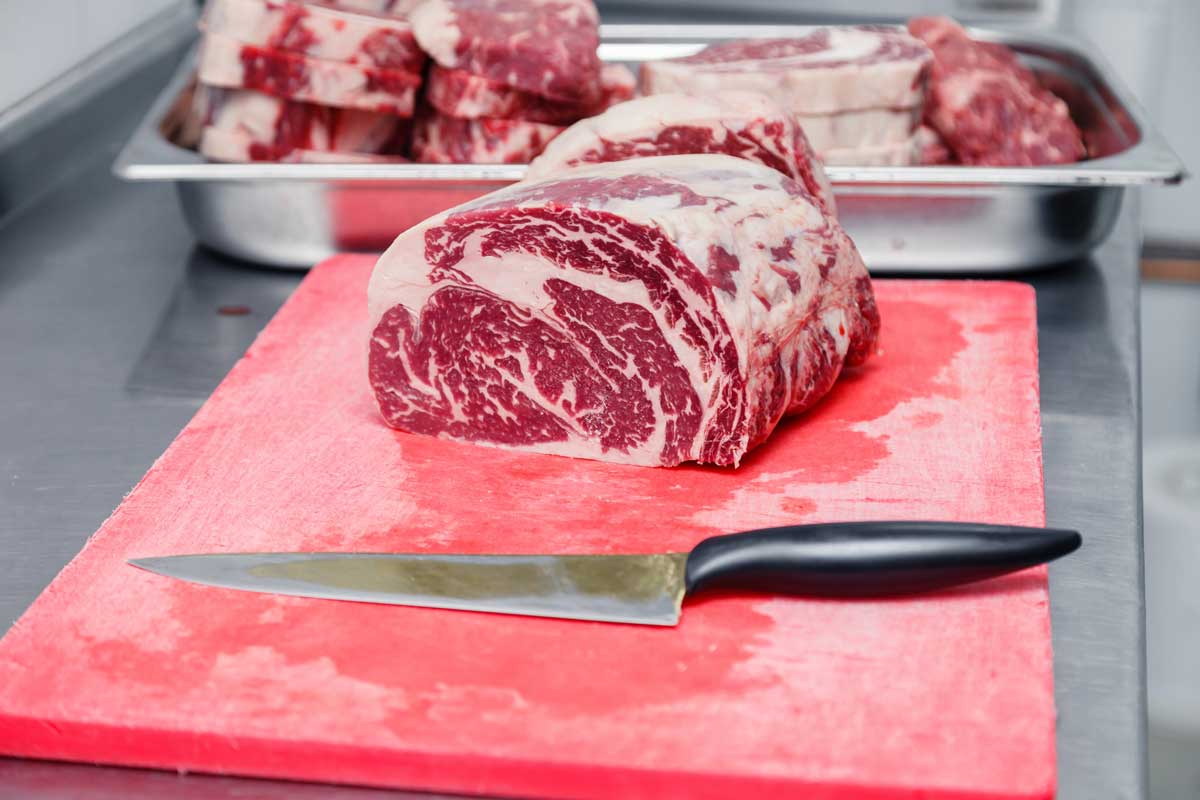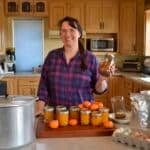Are Plastic Cutting Boards Safe?
This post may contain affiliate links. Read my full disclosure here.
For years, plastic cutting boards have been recommended by food safety experts. Light and dishwasher safe, they seem practical and easy to use. But are plastic cutting boards safe?
Every time you chop vegetables, prep meat, or slice fruit, your cutting board takes a beating. What happens to the surface of the board as you cut? If you’re using a plastic cutting board, you may be adding millions of invisible microplastics to your meals each year.
These tiny particles aren’t just a harmless byproduct of wear and tear. They’re increasingly linked to gut inflammation, immune disruption, and metabolic issues.
New research is raising red flags about just how much plastic we’re unintentionally eating. The results may have you reconsidering what you use under your chef’s knife.

Table of contents
Plastic Cutting Boards: A Hidden Source of Microplastics
- Cutting on plastic boards can release 14–79 million particles per person per year
- This equates to roughly 7–50 grams of plastic annually, depending on usage and material
- That’s the equivalent of eating 6–10 credit cards or 15–25 grocery bags of plastic—just from meal prep
Researchers noted that while these particles may not cause immediate cellular harm in lab settings, long-term exposure remains a significant concern, especially when combined with other dietary sources of microplastics.
| Cutting Board Material | Estimated Annual Plastic Ingested | Visual Comparison |
|---|---|---|
| Polyethylene (PE) | 7–50 g | 1.5–10 credit cards or 3–25 grocery bags |
| Polypropylene (PP) | ≈50 g | ~10 credit cards or 25 grocery bags |
Contaminated Food from Cutting Boards
Another study published in The International Journal of Environmental Research and Public Health tested chicken and fish that had been cut on plastic boards.
Would you like to save this?
Both types of meat were found to be contaminated with microplastics. Washing reduced but did not eliminate contamination. This makes the cutting board itself a direct and recurring source of plastic ingestion. Plastic cutting boards can also harbor more bacteria (more on this below).
How Microplastics Harm the Body
The concern goes far beyond the kitchen counter. According to a 2023 study in Environmental Health Perspectives, microplastics:
- Trigger inflammation in the digestive tract
- Alter the gut microbiome, which affects immune response and mental health
- Are associated with metabolic disruption, such as insulin resistance and liver stress
- Can cross into tissues and bloodstream, with plastic particles found in human placenta, lungs, and blood samples
This suggests that even small, repeated exposures can contribute to cumulative health effects. The risk is higher for children, pregnant women, or those with existing gut issues.
A Better Alternative: Wood Cutting Boards
If you’re ready to ditch plastic, there’s good news—wooden cutting boards offer a safer, more natural option, and they come with added benefits:
- Naturally antibacterial: Studies show that hardwoods like maple and walnut inhibit bacterial growth better than plastic, even when exposed to raw meat. The article “Wooden Cutting Boards and Bacteria” explains in more detail.
- Better for your knives: Wooden boards are gentler on knife edges, helping your tools last longer.
- Durable and sustainable: With proper care, a quality wood board can last for decades. Wash with warm, soapy water, dry promptly, and treat with mineral oil as needed.
See “How to Clean a Wooden Cutting Board (with Odor Removal Tips)“.
Takeaway: Choose Safer Surfaces
While plastic boards may seem convenient, they come with a hidden cost to your health. Over time, they contribute to microplastic pollution in your body, especially if used frequently or when worn down.
Switching to a wooden cutting board is one of the simplest and most effective ways to reduce microplastic exposure at home. You’ll also help your knives last longer, and reduce bacteria exposure.

Laurie Neverman has her bachelor’s degree in mathematics and a master’s in mechanical engineering. She paid part of her way through college working at the family catering business, Irene’s Custom Cakes & Catering. Now she and her family grow and preserve most of their food on their Wisconsin homestead.
